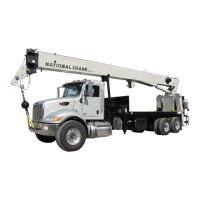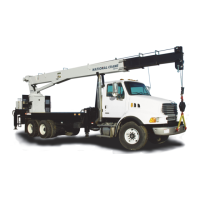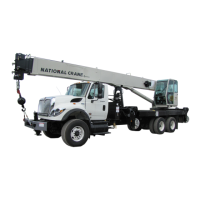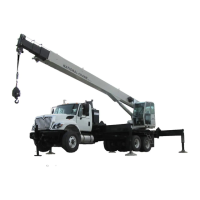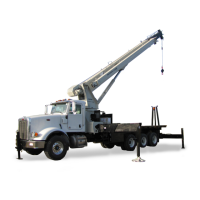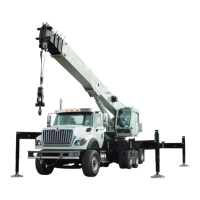SERVICE 800D
5-42
Published 5-27-2018 Control # 039-06
11. Move to the sheave case end of the boom. Visually
determine if the wire has properly located itself onto the
sheave. If not, manipulate the wire placement through
the end of the boom and place the wire on the sheave. A
5 ft (1,50 m) long access tool (hook end) will simplify this
procedure greatly.
12. From the hoist mount end of the boom, assemble the
anti-two-block wire clamp on the extend cable anchor in
the rear of the 3rd section. Loop anti-two-block wire
around clamp and lightly tighten capscrew holding
clamp together. Keeping a slight amount of tension on
the wire at this point will keep the wire properly located
on the sheave.
13. From the sheave case end, pull the installation tool and
wire end out of the boom. The route of the anti-two-block
wire in the boom is now complete.
14. Pull wire at either end of boom to adjust length of wire on
sheave case end to properly attach and terminate wire.
15. Tighten anti-two-block wire clamp located in rear of 3rd
section.
16. Route sheave case end of anti-two-block wire around
clamp in sheave case and through holes in side plates.
Pulling on this end will tension the static length of anti-
two-block wire clamped in the 3rd. Approximately 15-25
lb (7-11 kg) will be sufficient to provide proper operation.
Tighten sheave case anti-two-block wire clamp.
17. Reassemble quick disconnect plug to anti-two-block
wire. Proper wire attachment is critical for proper anti-
two-block system operation. Consult electrical
schematic in this book for proper connector wiring
18. From hoist mount end of boom, slide strain relief/cord
grip onto wire, into approximately position inside the
boom.
19. Assemble spring and spade bolt to cord grip and
reassemble anchor components to extend cable anchor
plate on the hoist mount. Slide cord grip up anti-two-
block wire into boom to increase spring tension on
moving length of anti-two-block wire. Approximately 2 in
(50 mm) of spring extension tension should be adequate
for proper operation.
20. Visually inspect interior routing of anti-two-block wire for
excess slack in wire, inaccurate routing of wire, etc.
Correct any problems before boom operation.
ANTI-TWO-BLOCK WIRE WITH EXTERNAL
REEL
Operation
Boom is equipped with an anti-two-block utilizing a reel on
the outside of the boom. As the boom extends, the wire pays
off of the reel and is routed through a sheave on the hoist
end of the boom. The wire is then routed through roller
guides attached at the hoist end of the 2nd and 3rd boom
sections. The wire is then anchored at both ends of the 4th
boom section. A switch at the sheave case on the 4th section
controls switching of the signal. Three and four section
booms differ only in number of roller guides.
Maintenance
In the event of a break in continuity of the anti-two-block wire,
the hydraulic portion of the system will be disabled and make
certain crane functions inoperative. Before replacement of
the wire, check for continuity loss at the anti-two-block
switch, connector damage or corrosion, and overall system
condition. Due to the environmental exposure of the system,
CABLE ANCHOR
ATB CORD ROUTING
9394
Fo
r
Reference
Only
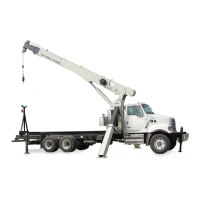
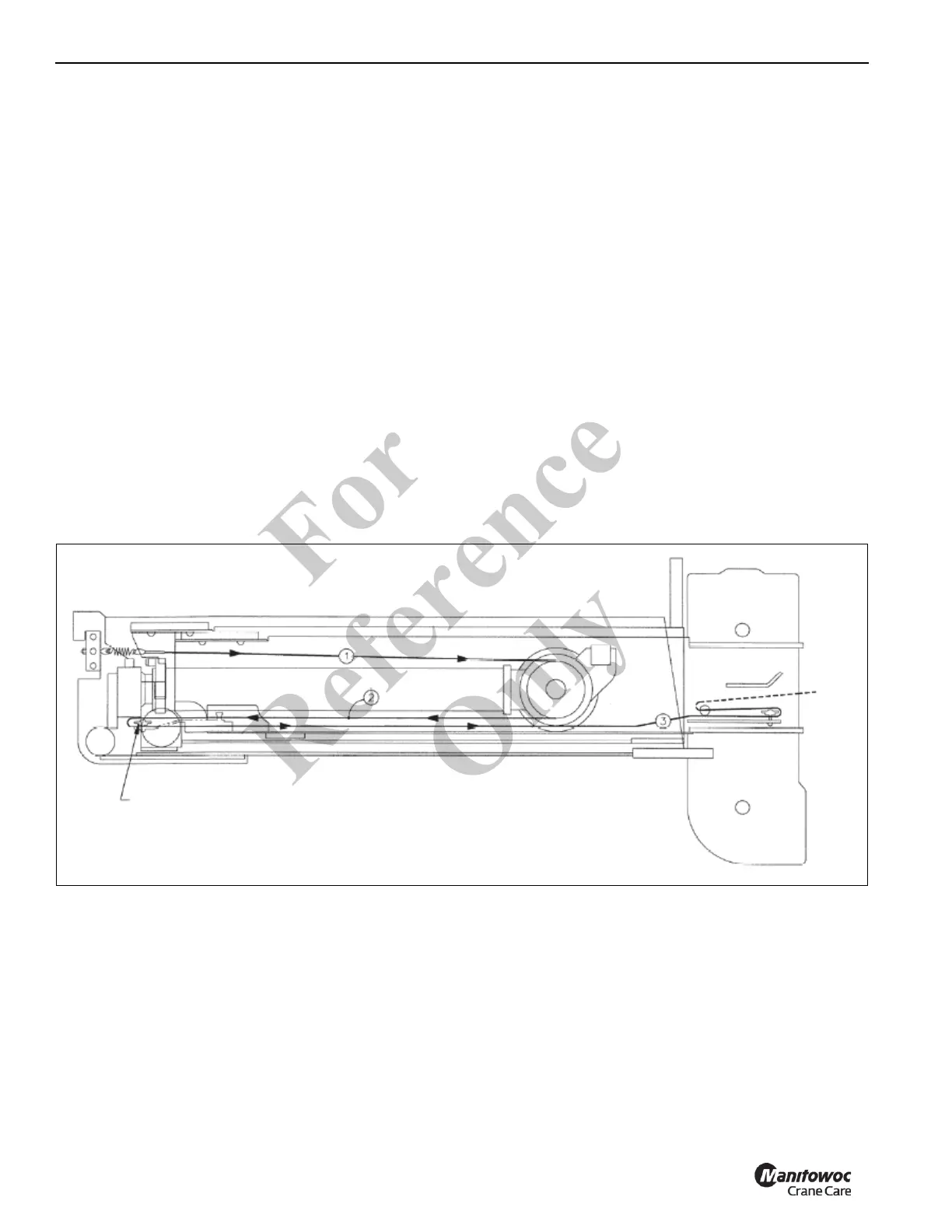